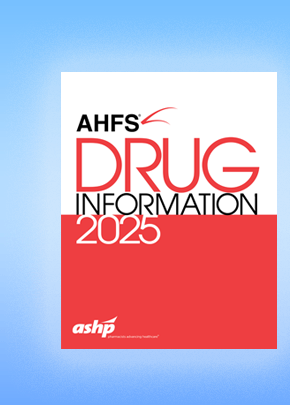
Catch up on new guidance, revised standards, and clarifications from the Joint Commission.
The Joint Commission has been busy updating and clarifying its standards on multiple medication-related topics, and pharmacy departments at accredited hospitals and health systems should plan to adapt their policies and processes accordingly.
The Joint Commission Update for 2023: Focus on Small and Rural Hospitals, held Dec. 4 at the Midyear Clinical Meeting & Exhibition, introduced attendees to survey process changes for 2022 as well as anticipated changes for 2023.
Jeannell Mansur, principal consultant for medication management and safety for Joint Commission Resources, leveraged recent survey data on top-scored standards and best practices, as well as top areas of noncompliance, to steer the session for attendees. Focus areas included new antimicrobial stewardship requirements and evaluating the quality of medication order templates and review processes.
The Joint Commission revised its antimicrobial stewardship standards for accredited hospitals and critical access hospitals this year in response to an observed decline in stewardship activities. “They really wanted to add teeth to the requirements,” Mansur explained.
The new standards, which go into effect Jan. 1, 2023, will require hospitals to assign financial resources for staffing and information technology to support antibiotic stewardship programs; implement at least two evidence-based guidelines to improve antibiotic use for common indications like community-acquired pneumonia and urinary tract infections; and monitor antibiotic use. The last expectation can be met by either analyzing data on days of therapy per 1,000 days present or 1,000 patient days or reporting antimicrobial use data to the National Healthcare Safety Network.
Mansur reminded antimicrobial stewardship leaders to align their program with nationally recognized guidelines and be ready to demonstrate adherence to at least one evidence-based guideline.
“Use this opportunity to do a gap assessment of the new requirements and determine what is already in place and what needs to be developed,” Mansur said. “Think about the kinds of data you’ll now be expected to collect and extract.”
Mansur also reviewed best practices for implementing complex medication orders. Standards require that hospitals establish policies for certain medication order types, including PRN (as needed) orders, titration orders, range orders, and — newest on the list — signed and held orders.
“If your hospital uses any of these order types to prescribe medication, make sure you have a policy stating the required elements for each type. I still see hospitals that don’t have such policies,” noted Mansur.
Mansur offered the example of how range orders can “become your friend” with titration orders, granting nurses flexibility to adapt to patient needs — as long as an organizational policy properly instructs how range orders should be interpreted. Required elements for a medication titration order include the initial rate of infusion, incremental units to which the rate or dose can be increased or decreased, the maximum rate or dose of infusion, and an objective clinical measure that can guide changes.
The session then segued into a general discussion of improving the accuracy of medication orders. In Mansur’s experience, when nurses do not follow orders as written, it’s almost always because the orders themselves are unclear, incomplete, or conflicting. “We must make our orders stronger,” she said.
Pharmacists can further improve compliance by evaluating the medication order review process. “It is the Joint Commission’s expectation that [pharmacists] will catch these things during the order review,” Mansur said.
By tracing titration and other medication orders, pharmacists can diagnose problems that Joint Commission surveyors would be likely to detect, then develop an action plan to resolve them ahead of their next survey. Adding or expanding fields within the titration order template, for example, is one tactic to ensure such medications are given according to provider order.
The session also touched on Joint Commission guidance for the pre-spiking of IV bags, using patients’ own insulin pumps in the hospital setting, engaging with remote pharmacy services, sterile compounding, and do’s and don’ts for auto-verification of medications that bypass pharmacist review.
Pharmacists should periodically check the Joint Commission’s website for updates on medication-related topics and familiarize themselves with the latest standards.







